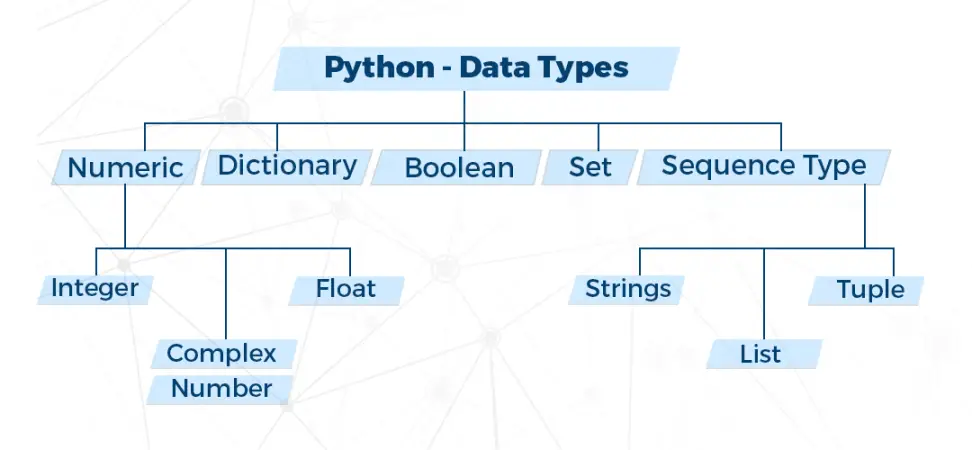

Unlike integer, float does have a maximum size, which is referred to as inf (which stands for infinity). You can leave out the int portion because Python will automatically detect the number is an integer (the same holds true with other data types).Ī float class number does include a decimal point and can be either negative or positive and can even be represented by scientific notation. To understand this, log into the Python console with the command: It’s also important to understand that Python does not allow the comma to be used as a numerical delimiter. Integers do not have a decimal point and there’s no limit to how long an integer can be. In Python, numeric data types can be integer, floating number, or complex numbers.Īn integer (represented as a class by int) is a positive or negative whole number, such as -1, 2, 3, 4, -10, 20, 3000, or 40,000. This is probably the easiest to understand because we all know what numbers are. And so, what are the different data types? Let’s find out. Some of those types include different “sub-types” (more on this in a bit). However, we’re going to go with the following list (because it’s the one most seem to agree upon): One bit of confusion is that you’ll find different lists for these types (so there seems to not be any sort of agreeance on what to either include in this list or to call the types). For example, if you didn’t have data types, you might set x = 2 and y = 10, but if you try to add those together with a function, Python wouldn’t know they were numbers so it wouldn’t be able to make the calculation. Without data types at play, you could set a variable, but Python wouldn’t know what to do with it. Because it is stored as a specific data type, Python will know what can be done with it. In that case, the variable x will store an integer that is a particular data type. The above statement sets the variable x as an integer from input taken from a user.

When compared, isinstance() is better than the type() function in Python.X = int( input( "Type a number to start the range:")) You use an isinstance to confirm your suspicions about the type of object. In simple words, you use type() to check the exact type of object.

On the other hand, the type() function returns the type of an object. Isinstance() in an in-built function in Python. Print("The class object types are same.") Difference Between type() Function and isinstance() Function Print("The class object types are different.") However, the data types used in Python are a bit different from those used in C or C++.Īnother example where we can use the type() for using it as condition: class Dicto:ĭictNumber = The type() function can return the data type with a single argument. In general, we use the type() function to check the data type of any variable used in Python. The first parameter determines the variable which we want to check while the second parameter determines the standard Python type (as mentioned in the list above). The isinstance() helps programmers to check the type of variable. Python programming treats everything as an object. In Python, each value contains a data type. That is what is necessary for this article. We use the 'type()' function in Python for obtaining the variable type. It means that the isinstance() function will return TRUE only when a stated object is of the desired type. This function takes subclasses into account. To test any object in Python, we use the 'isinstance()' function. Dictionary: A dictionary contains key-value pairs in an unordered form.Set: A set consists of unique items in an unordered form.We cannot change the values inside the tuple after creating them. Tuple: Tuple consists of elements of different data types in an ordered form.We can change the values inside the lists even after creating them. String: It consists of Unicode characters- a global coding standard.Number: This data type consists of integers, complex numbers, etc.You can refer to the examples below to gain a better understanding. In this article, you will have a clear understanding of the 2 approaches to fetch the type of a variable and how these two techniques are different. This article contains descriptive information of the type() and isinstance() functions in Python.Įxtracting the type of variable Python is holding is important to debug and testing purposes. Data type plays a significant role in almost all programming languages.


 0 kommentar(er)
0 kommentar(er)
